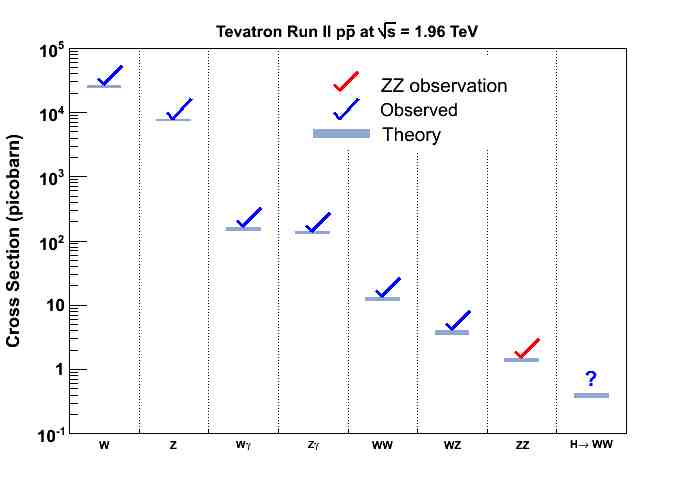
Smaller cross sections mean more sensitive detection ability is needed to spot certain fundamental processes. The observation of the ZZ process shows that Fermilab physicists are nearly at the level required to observe the Higgs boson decaying into two W bosons.
How rare is rare? In the case of the DZero experiment at the Fermi National Accelerator Laboratory, rare means three out of 200 trillion. That's the result that DZero scientists found when they sifted through 200 trillion proton-antiproton collisions to find those that produced a pair of Z bosons-carriers of the weak force.
Next on the menu: collisions that produce the elusive Higgs boson, which would explain why elementary particles such as electrons have mass.
The discovery of the rare ZZ process--announced in a press release today--is the last step in a series of measurements of rarer and rarer processes made by the CDF and DZero experiments at Fermilab over the last 15 years (see graph right).
The ZZ process shares important characteristics and signatures of subatomic processes that involve the Higgs boson. Hence finding ZZ events is an essential step in demonstrating the ability of particle physicists at Fermilab to see the Higgs. If the Higgs particle is not too heavy, the CDF and DZero collaborations hope to find collisions that produce a Z boson and a Higgs boson simultaneously.


